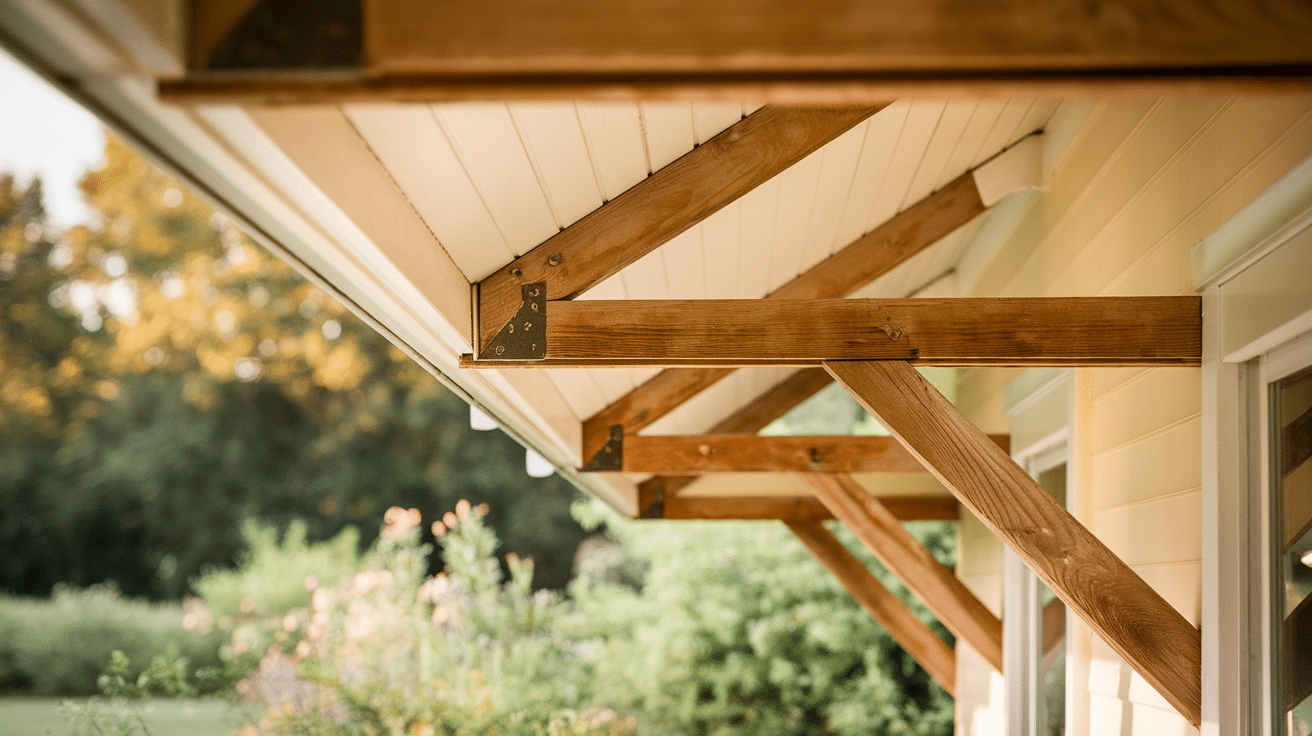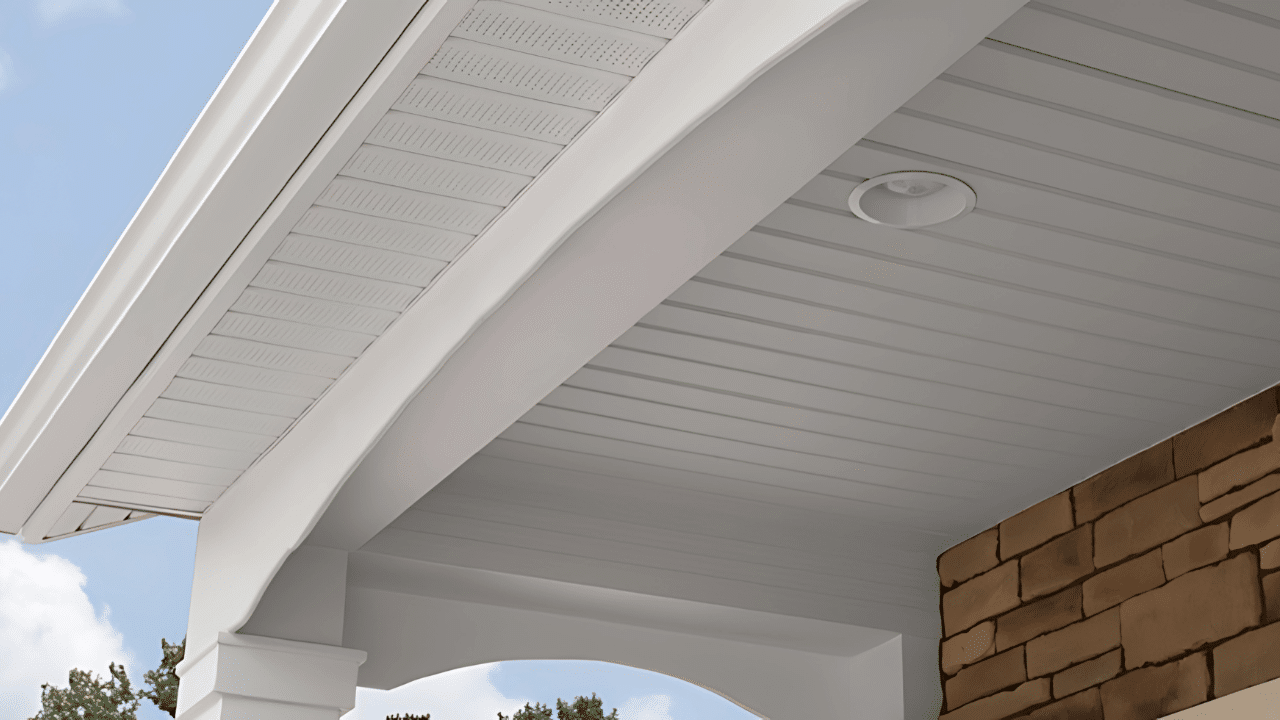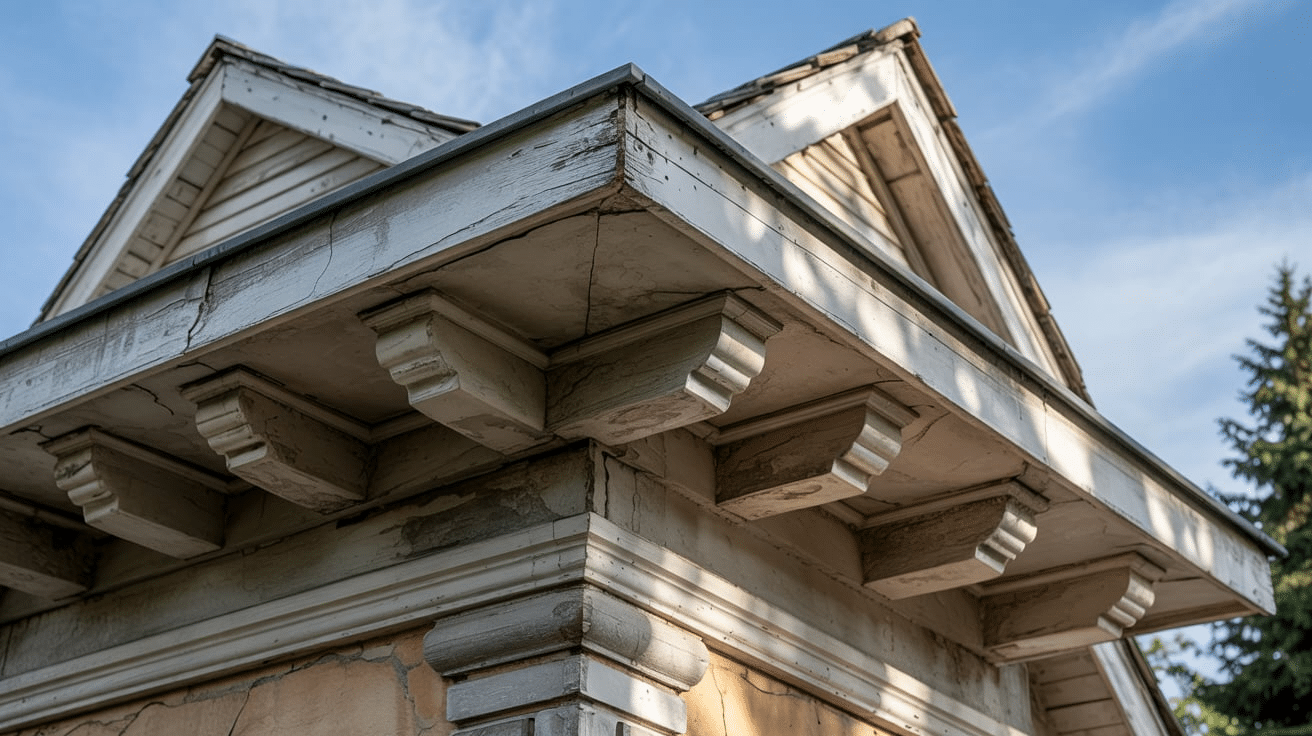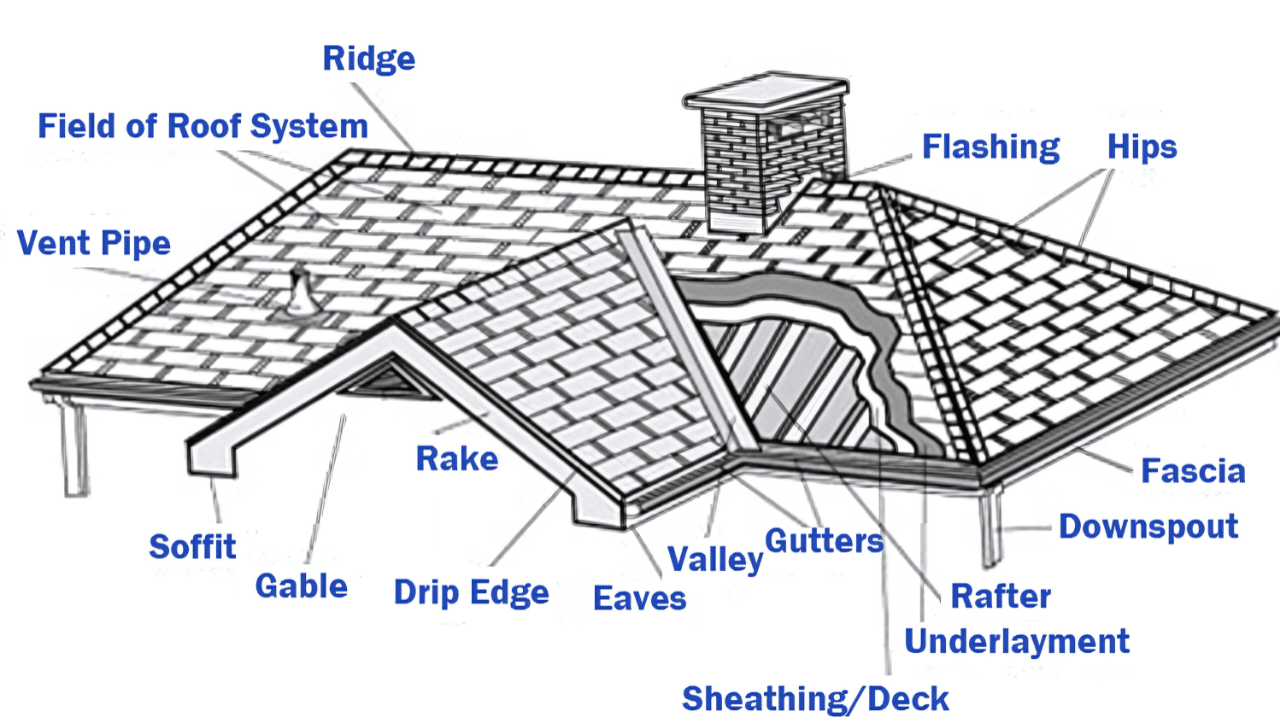Have you ever looked up at your house and wondered about that flat strip tucked under your roof’s edge? You’re not alone.
Most homeowners walk past this important part of their home every day without knowing what it does or why it matters.
That flat area is called the soffit, and it’s working hard to protect your home behind the scenes. This quiet helper keeps your attic breathing properly, blocks unwanted pests from moving in, and prevents costly moisture damage that could hurt your wallet later.
In this guide, you’ll learn exactly what a soffit is, why your home needs it, and how to keep it working well. By the end, you’ll have the knowledge to spot problems early and make smart choices about your roof care.
What is Soffit and What Makes It so Important
The soffit is often overlooked, but it plays a vital role in keeping your home healthy and protected.
Located beneath the roof overhang, it allows your attic to breathe by letting cool air in and pushing warm, moist air out.
This ventilation helps prevent mold, mildew, and insulation damage while keeping attic temperatures down in summer.
Beyond airflow, the soffit acts as a shield for your rafters, blocking rain, snow, and debris that could cause rot and costly repairs.
It also adds a clean, polished look to your roofline by covering exposed beams and rough edges, boosting both comfort and curb appeal.
Types Of Materials Used for Soffits
Not all soffits are built the same; what they’re made of can make a big difference in how they perform and how long they last.
1. Wood

A traditional material that offers a warm, classic look. It’s easy to paint or stain to match your style. However, it needs regular care to prevent rot and insect damage.
- Best suitable for: Classic, rustic, or craftsman-style homes
- Why choose it: It adds natural beauty and is perfect if you want a customizable finish.
2. Vinyl

It is lightweight, moisture-resistant, and low-maintenance. It’s available in various colors and doesn’t require painting. Though affordable, it may crack in extreme cold.
- Best suitable for: Modern homes and budget-friendly projects
- Why choose it: Great for DIY installs and works well in damp or humid regions.
3. Aluminum

A strong, rust-resistant metal that lasts for years. It handles moisture well and supports ventilation panels. Be cautious, it can dent easily.
- Best suitable for: Homes in rainy or coastal areas
- Why choose it: Long lifespan and strong protection against harsh weather.
4. Fiber Cement

Made from a mix of cement and cellulose fibers, it’s super tough. Resistant to fire, insects, and moisture, but heavier to install.
- Best suitable for: Coastal, humid, or fire-prone zones
- Why choose it: Low maintenance and built to handle extreme conditions.
Pros and Cons of Soffit Materials
Each material has its strengths and drawbacks. Here’s a quick comparison to help you choose the right fit for your home’s style, climate, and maintenance needs.
| Material | Pros | Cons |
|---|---|---|
| Wood | Natural look, customizable, paints/stains well | Needs upkeep, prone to rot/insects in wet climates |
| Vinyl | Low cost, easy to maintain, resists moisture | Cracks in cold weather, limited design flexibility |
| Aluminum | Rust-resistant, supports venting, and durable | Can dent, costs more than vinyl |
| Fiber Cement | Fire/moisture/insect resistant, long lifespan | Heavier, more expensive, harder to install |
Maintenance and Common Issues
Soffits may not demand daily attention, but they do need regular care to stay strong and functional. Here are five simple but important tips to keep your soffits in great shape:
- Inspect Regularly – Look for peeling paint, sagging spots, stains, or holes at least twice a year.
- Watch for Pests – Birds, bees, and rodents often sneak into gaps or vents, check for nests or droppings.
-
Prevent Moisture Damage – Proper ventilation helps stop mold, mildew, and rot from setting in.
- Clean Often – A quick wash every few months keeps dirt, cobwebs, and mildew from building up.
- Fix Quickly – Don’t wait, seal cracks, repaint wood, or replace broken panels right away.
Keeping up with these basics will help your soffits last longer and perform better, quietly protecting your home, season after season.
Other Roof Overhang Components

The roof overhang isn’t just a design feature; it’s a protective system made up of several connected parts.
Each one plays a specific role in shielding your home from weather, pests, and moisture. Here’s a full list of all the main components found in a roof overhang:
-
Soffit
The horizontal underside of the roof overhangs. It allows for attic ventilation, protects rafters from moisture, and keeps pests out. -
Fascia
The vertical finishing edge connects to the ends of the rafters or trusses. It holds the gutters and helps block water from reaching the roof’s interior structure. -
Eaves
The full section of the roof that extends beyond the exterior walls includes the soffit, fascia, and sometimes gutter systems. It helps direct rainwater away from the home. - Rafter Tails
The exposed or covered ends of the rafters that extend past the wall line. These support the roof overhang and may be visible beneath the soffit. -
Gutters
Attached to the fascia, gutters collect rainwater from the roof and channel it away from the home’s foundation through downspouts. -
Drip Edge
A metal flashing is installed at the roof’s edge. It directs water off the fascia and into the gutter, preventing water damage. -
Lookouts
Horizontal supports that extend from the wall to hold up the eaves in open soffit designs. These are more common in decorative or exposed overhangs. -
Frieze Board
A trim board that sits just below the soffit and above the exterior wall. It adds a finishing touch and may help seal the top of siding.
What to Keep in Mind
Together, these components form a durable, weather-resistant edge that protects your home and keeps the roof looking clean and complete.
The underside of a roof overhang is called the soffit. It helps air flow into the attic, keeps water out, and protects the roof’s edges from rot and damage.
Soffits come in different materials, each with its pros and cons. Vented soffits help prevent mold and heat buildup.
Got any questions or tips from your own roof care? Share your thoughts in the comments below, we’d love to hear from you!
Frequently Asked Questions(FAQs)
What’s the Difference Between Eaves and Soffits?
Eaves are the full overhanging edge of the roof. Soffits are the flat underside part of the eaves. The soffit is just one component of the eaves.
What is the Underside of an Eave Called?
It’s called the soffit. It covers the bottom of the roof overhang and allows airflow. It also protects the rafters from moisture and pests.
How Much Does It Cost to Replace Soffits?
It usually costs $20–$30 per linear foot. Most homeowners spend between $600 and $2,000 total. Costs vary by material and roof design.
What is the Life Expectancy of A Soffit?
Vinyl or aluminum soffits can last 20–30 years or more. Wood soffits may need replacing sooner. Good maintenance helps them last longer.


